People, who decide to equip their yard with a windmill for electricity, often ask questions about which permits and documents are needed for this event. In addition, citizens are very interested in the existence of certain inspections by the competent authorities and the legality of unauthorized installation of the generator.
In our legislation, wind turbines are the most controversial issues in the field of permits and inspections. This is due to the complexity of the design and the likelihood of the emergence of hazardous situations for a person associated with the work of the windmill.
 The use of alternative equipment in our country does not yet have a separate section in the legislation, which greatly complicates the interpretation of general legislative acts. If you believe the manufacturers of wind equipment, then such devices are in one row with electric. Such opinion is confirmed by the manufacturers of wind turbines by the Decree of the Cabinet of Ministers of Ukraine “On state expert examination on energy supply”. This document confirms the possibility to use alternative installations without any registration measures, which capacity is less than 75 kilowatts. This applies to both solar and wind accessories. In the text of the document it is really said that compulsory expertise is not required for engineering, which does not differ in energy capacity. Under the notion of “energy-intensive technology” in this case, devices with a capacity exceeding 75 kilowatts are covered.
The use of alternative equipment in our country does not yet have a separate section in the legislation, which greatly complicates the interpretation of general legislative acts. If you believe the manufacturers of wind equipment, then such devices are in one row with electric. Such opinion is confirmed by the manufacturers of wind turbines by the Decree of the Cabinet of Ministers of Ukraine “On state expert examination on energy supply”. This document confirms the possibility to use alternative installations without any registration measures, which capacity is less than 75 kilowatts. This applies to both solar and wind accessories. In the text of the document it is really said that compulsory expertise is not required for engineering, which does not differ in energy capacity. Under the notion of “energy-intensive technology” in this case, devices with a capacity exceeding 75 kilowatts are covered.
But there is also an important contradiction in this issue. The resolution of the Cabinet of Ministers, which is discussed, has a separate paragraph entitled “List of Objects to be subjected to State Energy Saving Examination”, which calls in question the above. The fact is that the heating systems created in our country are subject to mandatory inspection of state-level inspections of household appliances. Such accessories should have special operating permits. The list of equipment to be checked includes:
– Devices requiring the use of natural gas of more than 1 cubic meter per hour;
– boiler houses with a capacity of more than 0,5 gcal per hour;
– electrical accessories with a capacity exceeding 5 kilowatts.
This paragraph of the Regulation, as it were, takes into account equipment which consumes electric energy, since the object of verification is the use of fuel and energy resources. There is no tax on the energy of the sun or wind in Ukraine. This applies only to the use of natural resources.
For those who plan to install wind turbines, it will be useful to pay attention to the equipment requirements:
- Winds and related accessories must have Ukrainian certificates. In addition, a conclusion should be made regarding the compliance of the ACSB.
- Each wind generator must be equipped with a thunderbolt. Since wind installations are installed on high supports, this measure is mandatory in the framework of safety precautions. The private windmill cannot be above 30 meters.
- Legislation prohibits the use of electricity generated by private wind turbines in the general network or natural persons. In our country even criminal proceedings have been opened against the violation of this ban.
 Wind power plants have long proven themselves as profitable objects. The higher the power of such an object, the greater the benefit of its use. In our country, the most favorable regions for the installation of wind turbines are the Crimean Mountains, the Carpathians, the Black Sea and the Azov Sea. Windy weather in these areas contributes to increased generation volumes.
Wind power plants have long proven themselves as profitable objects. The higher the power of such an object, the greater the benefit of its use. In our country, the most favorable regions for the installation of wind turbines are the Crimean Mountains, the Carpathians, the Black Sea and the Azov Sea. Windy weather in these areas contributes to increased generation volumes.
The legislative framework for alternative energy sources is rather ambiguous. Therefore, the low rates of the appearance of new wind objects in Ukraine are fully justified. The authorities should pay attention to similar issues in order to accelerate the growth of the share of alternative energy in the country.











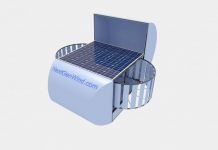
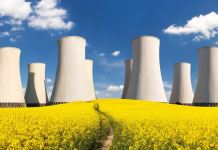


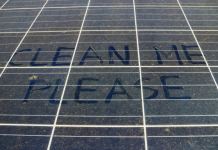

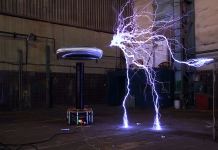



 It should be noted that solar modules occupy only a fraction of a percent in the total global volume of e-waste. During the existence of the solar energy industry, this industry has not had time to create large volumes of waste. Given the pace of development of this area of alternative energy (in 2017, 100 GW of capacity was commissioned), it can be assumed that the problem of utilization of solar panels will become more acute with each passing year. Experts in the field of solar energy argue that the situation is heating up in a dozen years, not earlier.
It should be noted that solar modules occupy only a fraction of a percent in the total global volume of e-waste. During the existence of the solar energy industry, this industry has not had time to create large volumes of waste. Given the pace of development of this area of alternative energy (in 2017, 100 GW of capacity was commissioned), it can be assumed that the problem of utilization of solar panels will become more acute with each passing year. Experts in the field of solar energy argue that the situation is heating up in a dozen years, not earlier. Since today the amount of e-waste from solar panels is small, the utilization is made by enterprises that process multi-layer glass or e-waste. In the process of such processing, the main components of the panel – copper, aluminum, glass – are isolated. Solar cells or plastic components of modules, in turn, can be burned or sent to special landfills. Rough recycling of panels, in its essence, is a technology for re-using laminated glass.
Since today the amount of e-waste from solar panels is small, the utilization is made by enterprises that process multi-layer glass or e-waste. In the process of such processing, the main components of the panel – copper, aluminum, glass – are isolated. Solar cells or plastic components of modules, in turn, can be burned or sent to special landfills. Rough recycling of panels, in its essence, is a technology for re-using laminated glass.
 Of all the alternative sources of energy, solar energy is the most popular and sought after. Experts noted that the growth of energy markets in 45 countries consistently has indicators of at least 20%.
Of all the alternative sources of energy, solar energy is the most popular and sought after. Experts noted that the growth of energy markets in 45 countries consistently has indicators of at least 20%.

 Scientists have created a prototype of a new fluoride battery. The components of this invention are: fluoride, lanthanum and copper. According to the inventors, such a battery is more environmentally friendly than a lithium battery. A new battery is capable of charging and recharging at room temperature. At the moment, it is not entirely clear how such a battery can function effectively in winter. The answer to this question from the creators has not yet followed.
Scientists have created a prototype of a new fluoride battery. The components of this invention are: fluoride, lanthanum and copper. According to the inventors, such a battery is more environmentally friendly than a lithium battery. A new battery is capable of charging and recharging at room temperature. At the moment, it is not entirely clear how such a battery can function effectively in winter. The answer to this question from the creators has not yet followed. China, in turn, also does not lag behind the world community in terms of energy conservation. In the city of Kunshan launched a plant that will produce solid-state energy drives. Production is a start-up, currently 144 million dollars are invested in it.
China, in turn, also does not lag behind the world community in terms of energy conservation. In the city of Kunshan launched a plant that will produce solid-state energy drives. Production is a start-up, currently 144 million dollars are invested in it.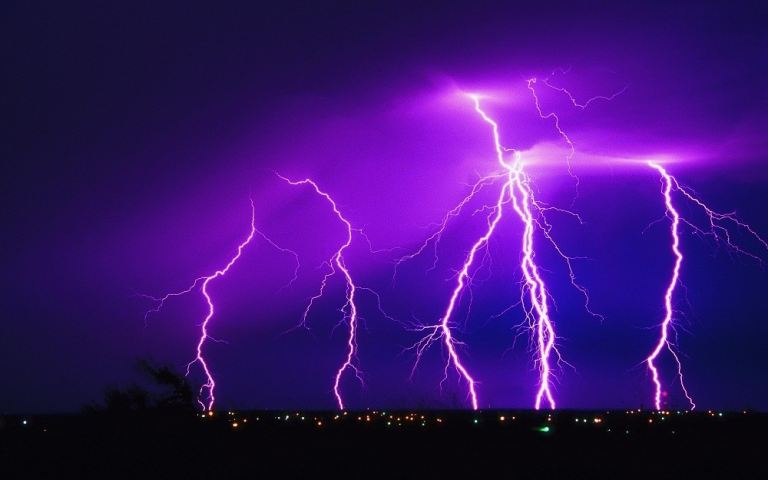
 The world-famous Olympiad, which took place in the United States, opened the Ukrainian schoolchild to the scientific world, who managed to discover a low-cost financially way to generate energy through the ionization of clouds. The leadership of the Olympiad called the discovery of the student “a new word in the energy industry.”
The world-famous Olympiad, which took place in the United States, opened the Ukrainian schoolchild to the scientific world, who managed to discover a low-cost financially way to generate energy through the ionization of clouds. The leadership of the Olympiad called the discovery of the student “a new word in the energy industry.” Before the victory at the Olympics of geniuses in the United States, a schoolchild more than once appealed to the authorities and the media for help in implementing the project. But no one responded. But after the high-profile victory in the scientific world, proposals from deputies and sponsors regarding the implementation of his idea literally fell on Samuel.
Before the victory at the Olympics of geniuses in the United States, a schoolchild more than once appealed to the authorities and the media for help in implementing the project. But no one responded. But after the high-profile victory in the scientific world, proposals from deputies and sponsors regarding the implementation of his idea literally fell on Samuel.
 If the bike is fully charged, then on such a “fuel” it is able to travel 45 kilometers. In case the owner of an innovative vehicle occasionally makes efforts and pedals, the distance may increase to 60 kilometers.
If the bike is fully charged, then on such a “fuel” it is able to travel 45 kilometers. In case the owner of an innovative vehicle occasionally makes efforts and pedals, the distance may increase to 60 kilometers. The release of the electric bike to the market is scheduled for April next year. It is worth noting that the initial amount of 50 thousand dollars required to start the project has already been exceeded more than ten times.
The release of the electric bike to the market is scheduled for April next year. It is worth noting that the initial amount of 50 thousand dollars required to start the project has already been exceeded more than ten times.
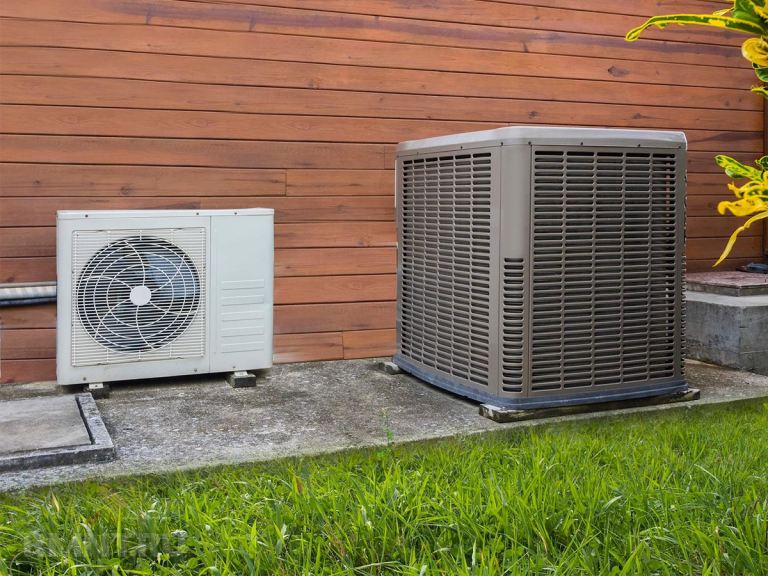
 There is one outstanding feature in the operation of HP – its efficiency increases with increasing difference in temperature indicators of the source of thermal energy and the consumer of heat in the finished form. Heat pumps are used in heating systems with low temperatures. The efficiency of the pump is higher, provided that the temperature of the coolant is 35-55 degrees Celsius.
There is one outstanding feature in the operation of HP – its efficiency increases with increasing difference in temperature indicators of the source of thermal energy and the consumer of heat in the finished form. Heat pumps are used in heating systems with low temperatures. The efficiency of the pump is higher, provided that the temperature of the coolant is 35-55 degrees Celsius.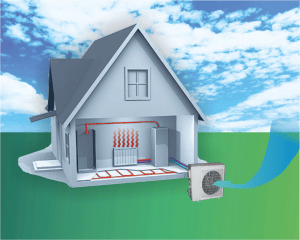 It should be noted the following pattern in the operation of heat pumps – the more heated the water that is used as a coolant, the lower the pump productivity. At the same time, the higher the temperature indicator has a heat source, the higher the productivity. For example, if the temperature of the heat source rises from -20 to +7 degrees Celsius, then the conversion rate of the heat pump rises from 2 to 4.
It should be noted the following pattern in the operation of heat pumps – the more heated the water that is used as a coolant, the lower the pump productivity. At the same time, the higher the temperature indicator has a heat source, the higher the productivity. For example, if the temperature of the heat source rises from -20 to +7 degrees Celsius, then the conversion rate of the heat pump rises from 2 to 4.
 Such a sad fairy tale in the realities of modern solar energy. The small generation for Ukraine is like a sip of clean air, and it clearly shows the political activity in stimulating the development of RES. But does it make sense to solve the future of “green” energy in closed cabinets, when some Ukrainians, born in the 90’s, hide it with their own hands?
Such a sad fairy tale in the realities of modern solar energy. The small generation for Ukraine is like a sip of clean air, and it clearly shows the political activity in stimulating the development of RES. But does it make sense to solve the future of “green” energy in closed cabinets, when some Ukrainians, born in the 90’s, hide it with their own hands? This story is one of many. The law in the field of solar energy is imperfect, but it is not an occasion to drop your hands. If you work on this issue together, side by side, then the results will not force itself to wait. The only question is whether there is a desire for Ukrainians to promote the development of “green” energy?
This story is one of many. The law in the field of solar energy is imperfect, but it is not an occasion to drop your hands. If you work on this issue together, side by side, then the results will not force itself to wait. The only question is whether there is a desire for Ukrainians to promote the development of “green” energy?
 Another feature of this module from the Chinese manufacturer Yingli is that it works on both sides. Its back side captures the light that reflects off the snow and transforms it into energy. During the operation of the device for the conversion of “green” energy, the generation of electricity in parallel produces heat, which accelerates self-purification.
Another feature of this module from the Chinese manufacturer Yingli is that it works on both sides. Its back side captures the light that reflects off the snow and transforms it into energy. During the operation of the device for the conversion of “green” energy, the generation of electricity in parallel produces heat, which accelerates self-purification.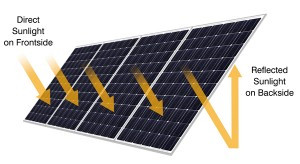 A few years ago, in the Netherlands, Chinese manufacturer Yingli Green Energy together with Tempress Systems BV launched SES with double-sided panels. At that time, it was the largest station in Europe with installed batteries of this type, although traditional stations of a larger size existed. According to the results of work, it was established that this SES produces 30% more electricity.
A few years ago, in the Netherlands, Chinese manufacturer Yingli Green Energy together with Tempress Systems BV launched SES with double-sided panels. At that time, it was the largest station in Europe with installed batteries of this type, although traditional stations of a larger size existed. According to the results of work, it was established that this SES produces 30% more electricity.




